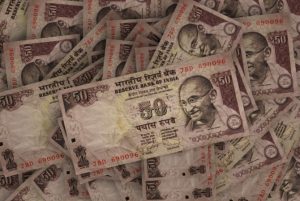50 cents a day? India moves poverty line goalposts
Greenspan: reduce debt before you spur growth
24 September, 2011Western banking to shrink by a quarter
24 September, 2011Emerging Markets, September 2011
A senior Indian policy official has denied that a new definition of the poverty line in India will penalize millions of the country’s poor.
On Tuesday India’s planning commission filed an affidavit with the country’s Supreme Court to re-set the level at which people are considered to be poor: those in rural areas living on more than 26 rupees (around 50 US cents) per day, and more than 32 rupees in cities, will not be considered poor – and therefore ineligible for government assistance such as food subsidies. The figure is starkly lower than the World Bank’s definition of the poverty line, at $1.25 per day.
But Kaushik Basu, chief economic adviser to the government of India, told Emerging Markets that the government had not yet decided which definition of poverty to use, and that the final definition would allow assistance to as many individuals as possible. “We are inclined to use the most generous definition,” he said, “by which I mean a definition where more people will qualify as poor.” Asked if the definition would impact who would qualify for food subsidies, he said: “Who will qualify as poor will certainly depend on this.”
The move has been widely derided as an attempt to make India appear to have less people in poverty than it does, but Basu said it was instead related specifically to a new food security program. “There are three competing definitions of poverty that are used in India,” he said. “When we switch from one to another, we don’t want to the mistake of… having poverty going down just by changing the definition: of course we don’t want to do that. But now we are going into a new food security program where we are going to try to reach out to a very substantial portion of the poorer population, we have data on the new definition so we can do that job better.” Previously the main definition of poverty in India has been based on calorie intake rather than income or spending.
Amar Bhattacharya, Director of the G24 Secretariat – and an Indian national who was previously a senior adviser on poverty reduction at the World Bank – also defended the move. “As long as you are consistent in the measure, I think that makes absolute sense,” he told Emerging Markets.
India’s opposition has pilloried the move. At a press conference in New Delhi yesterday, the BJP party spokesman Prakash Javadekar said the new criteria were “like rubbing salt in the wounds of the poor.”
“Estimating the numbers of people in poverty is an exercise which often ends in number crunching for the sake of justifying the government’s miserly investment in food and services for people living in poverty,” said Avinash Kumar of Oxfam India. “This seems to be the case here. This will exclude a vast number of people from essential services, when what is needed is universal access to basic needs like food, healthcare and education.”
Kumar added: “In the past few years, four different commissions set up by the government of India have come up four different estimates of the number of people living in poverty. This confusion within the government itself is a testimony to the government’s shoddy and often self-serving attempt to shy away from its real responsibilities.”
Basu also claimed that poverty was declining in India. “From 2005 to 2009, we know that poverty has gone down quite substantially no matter which definition you use.” Even based on the new definition, India would have more than 400 million poor, or around one third of the population.
